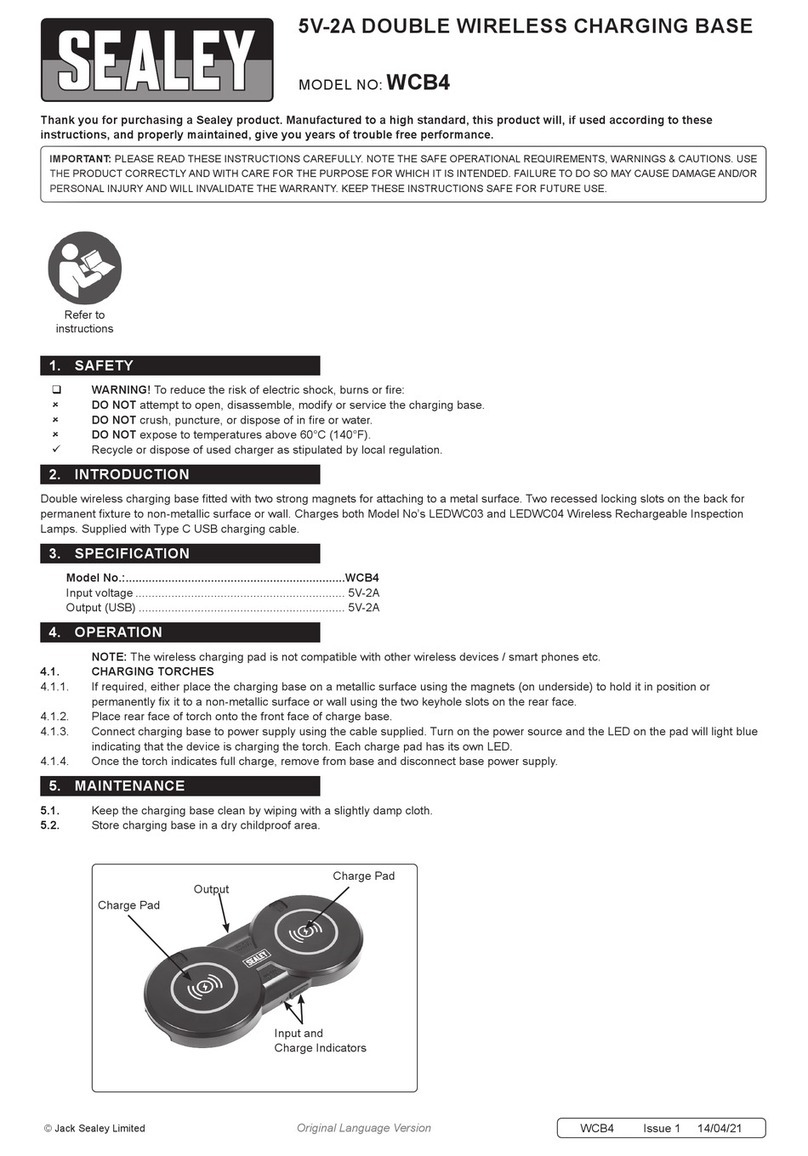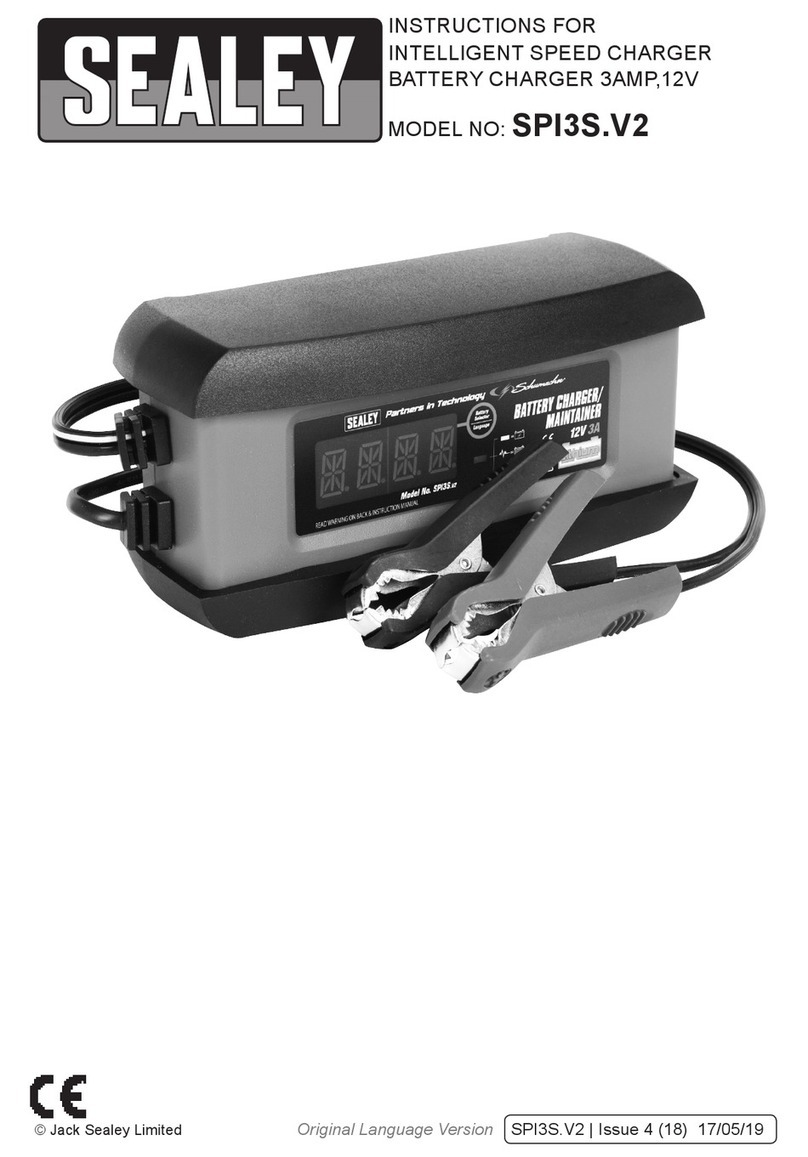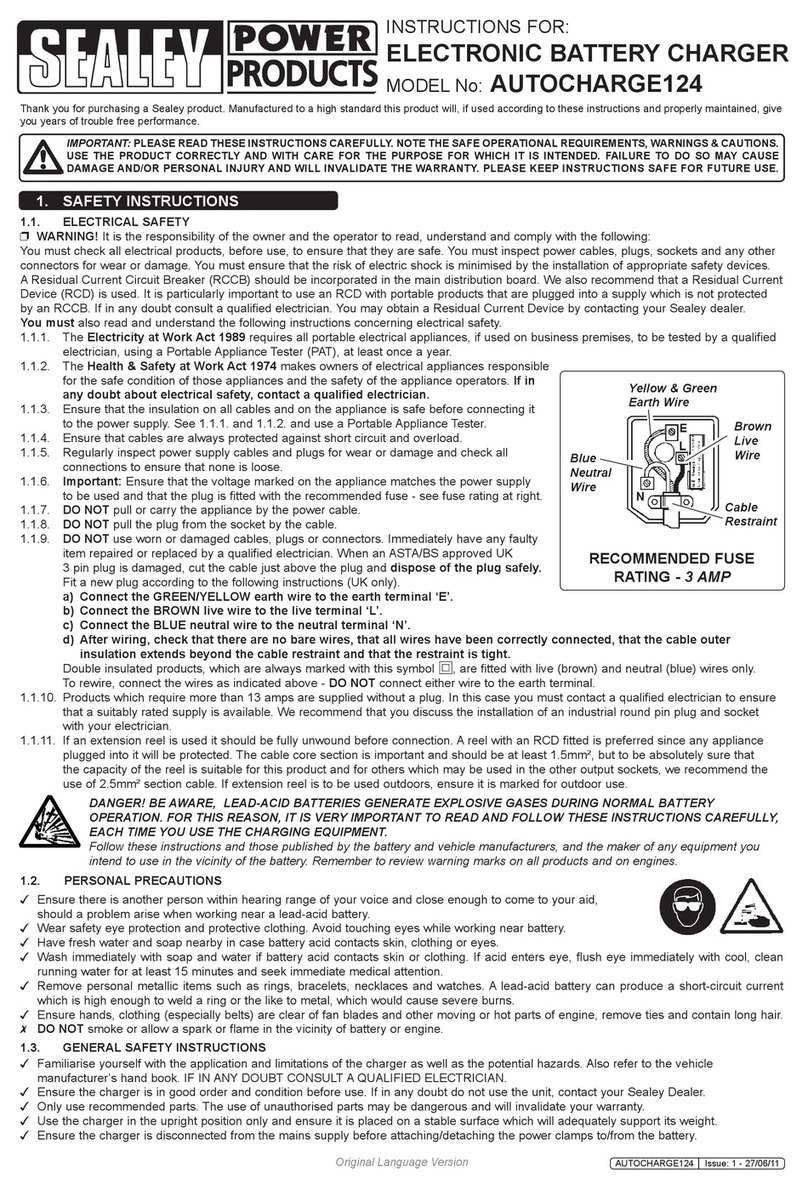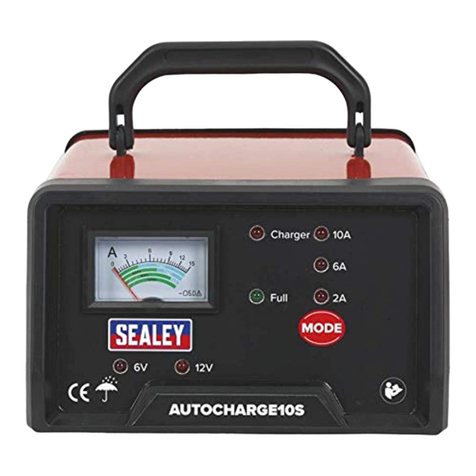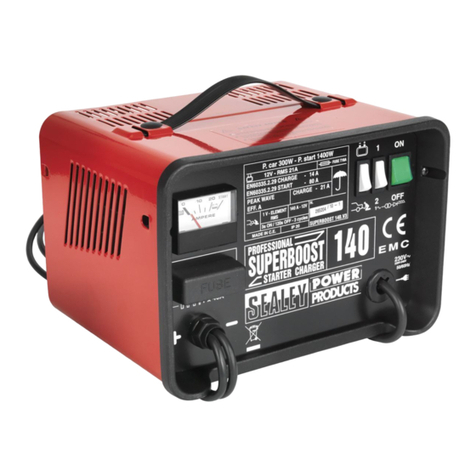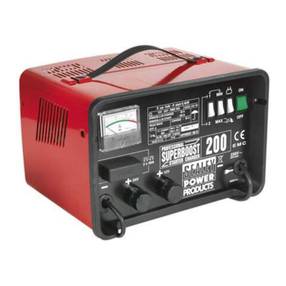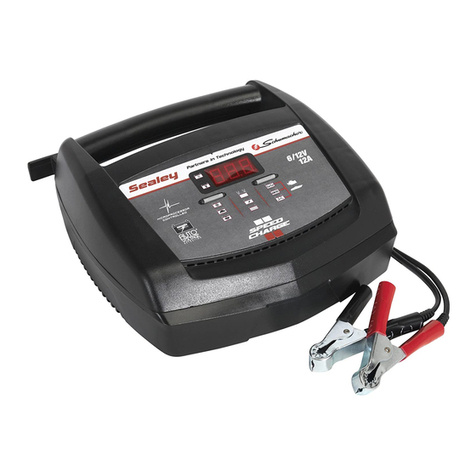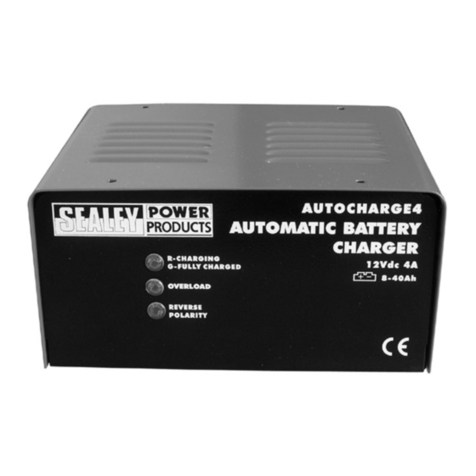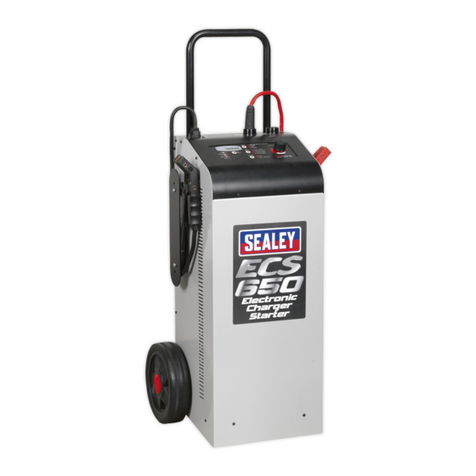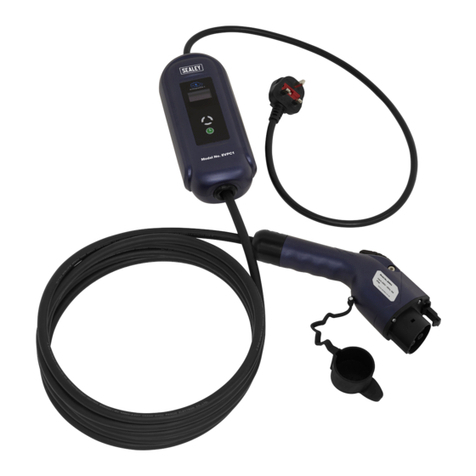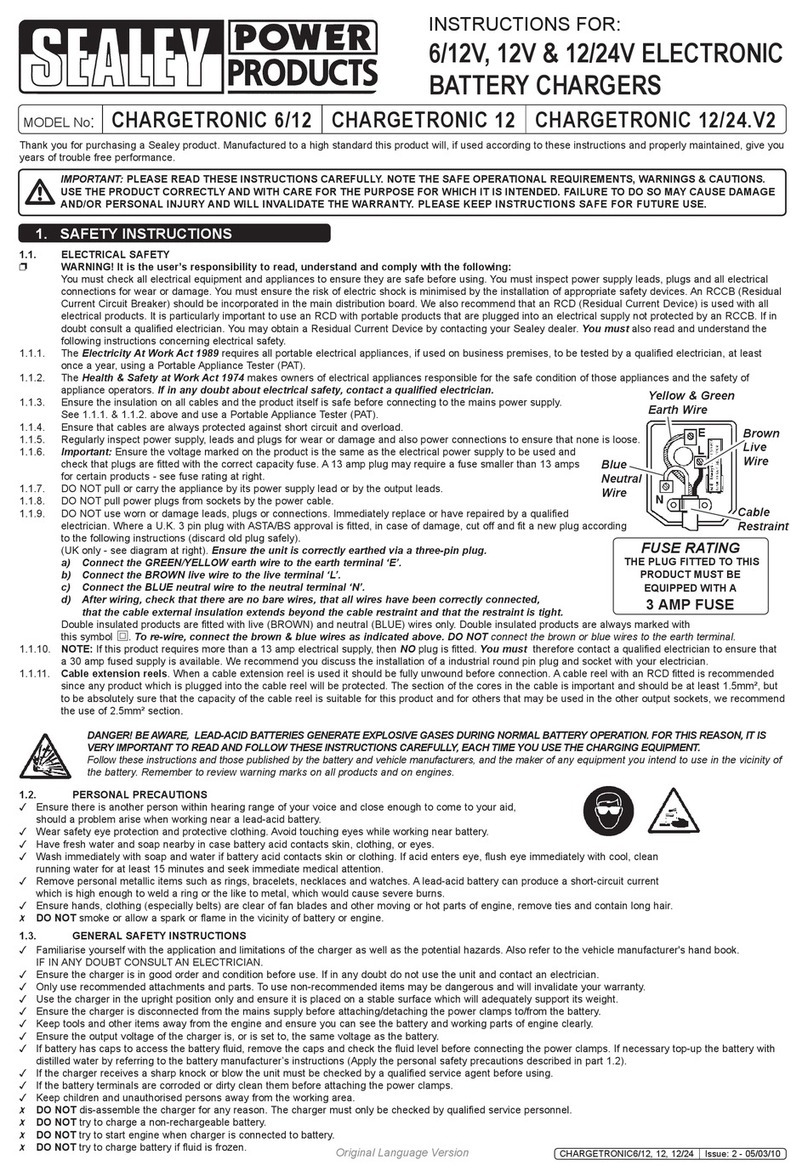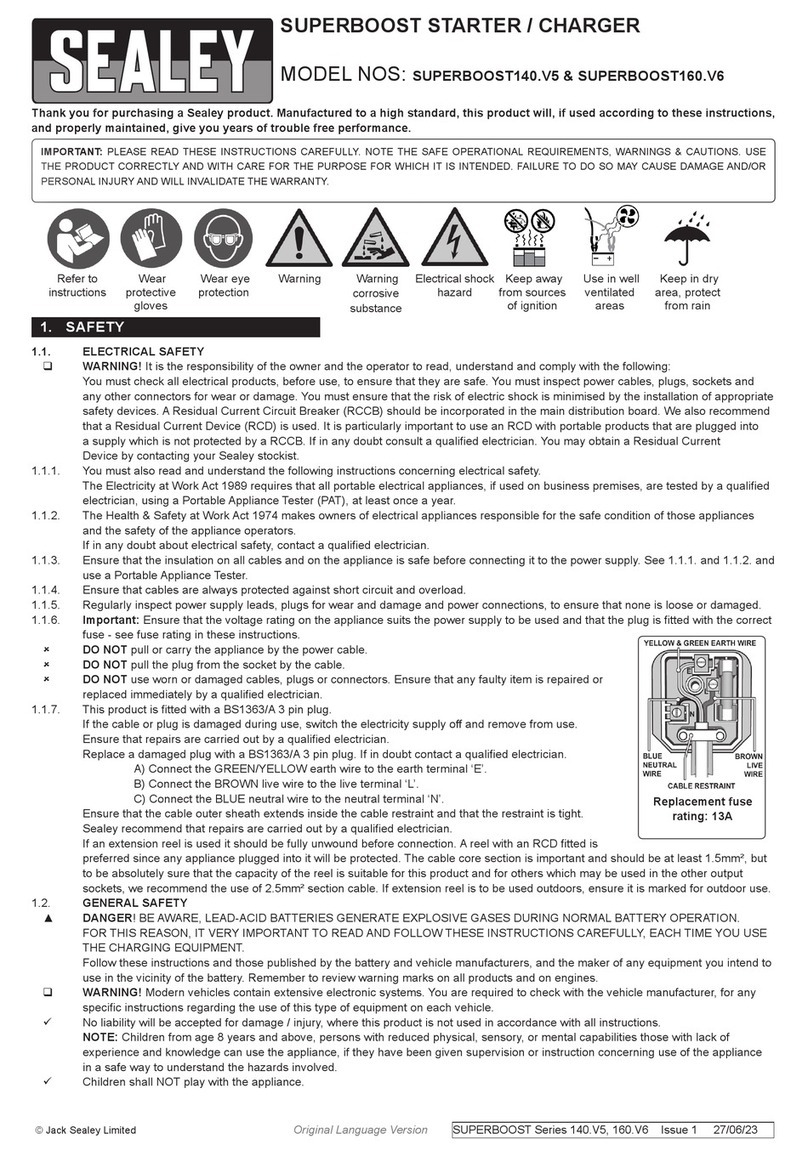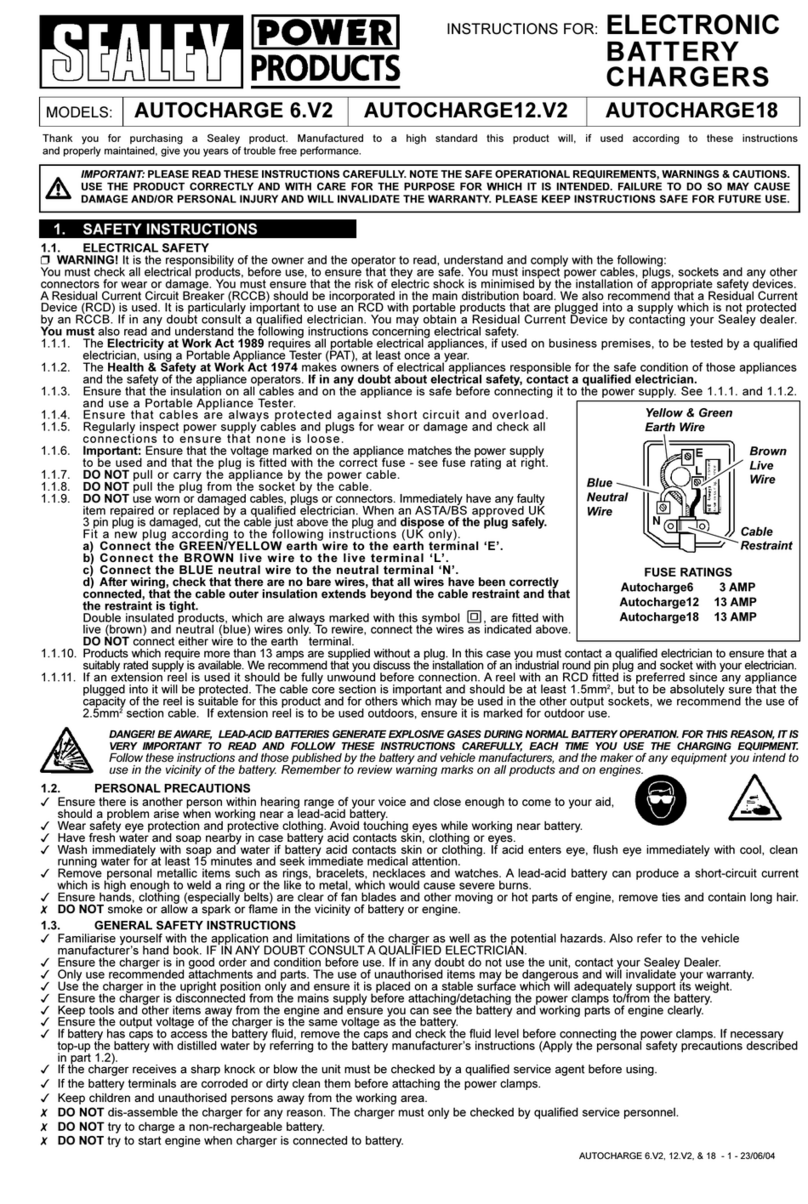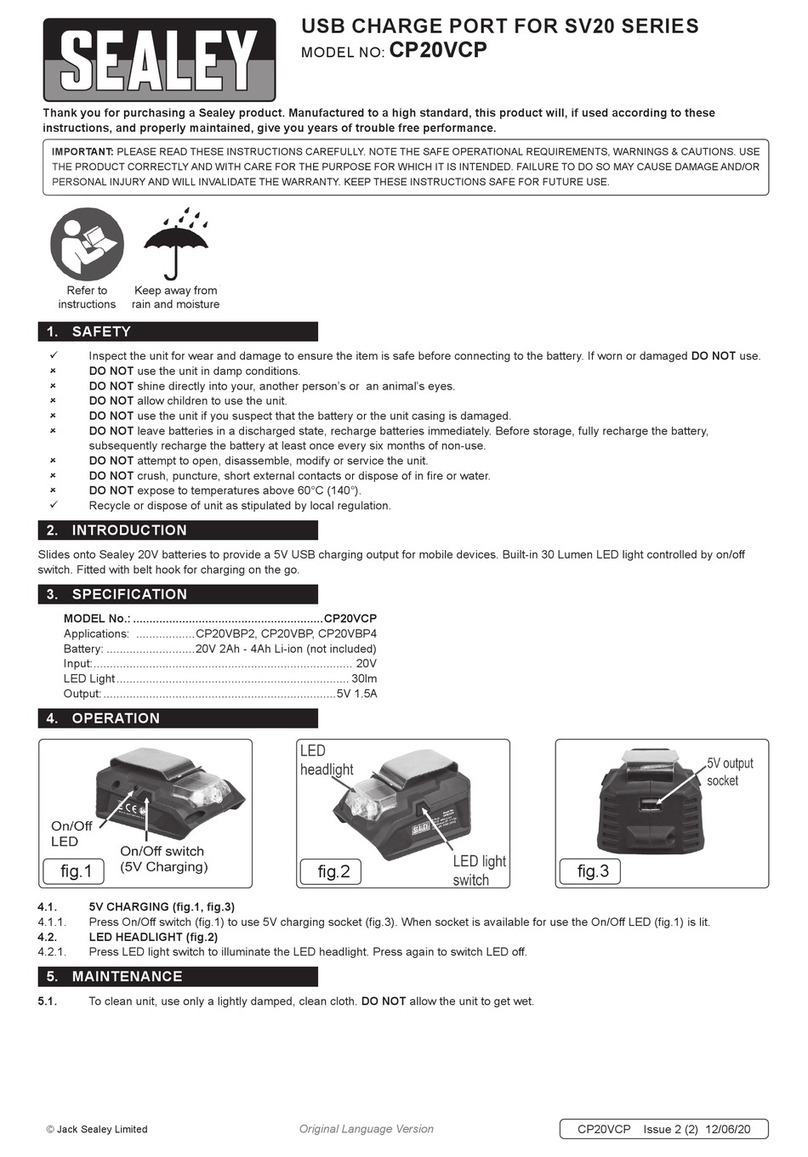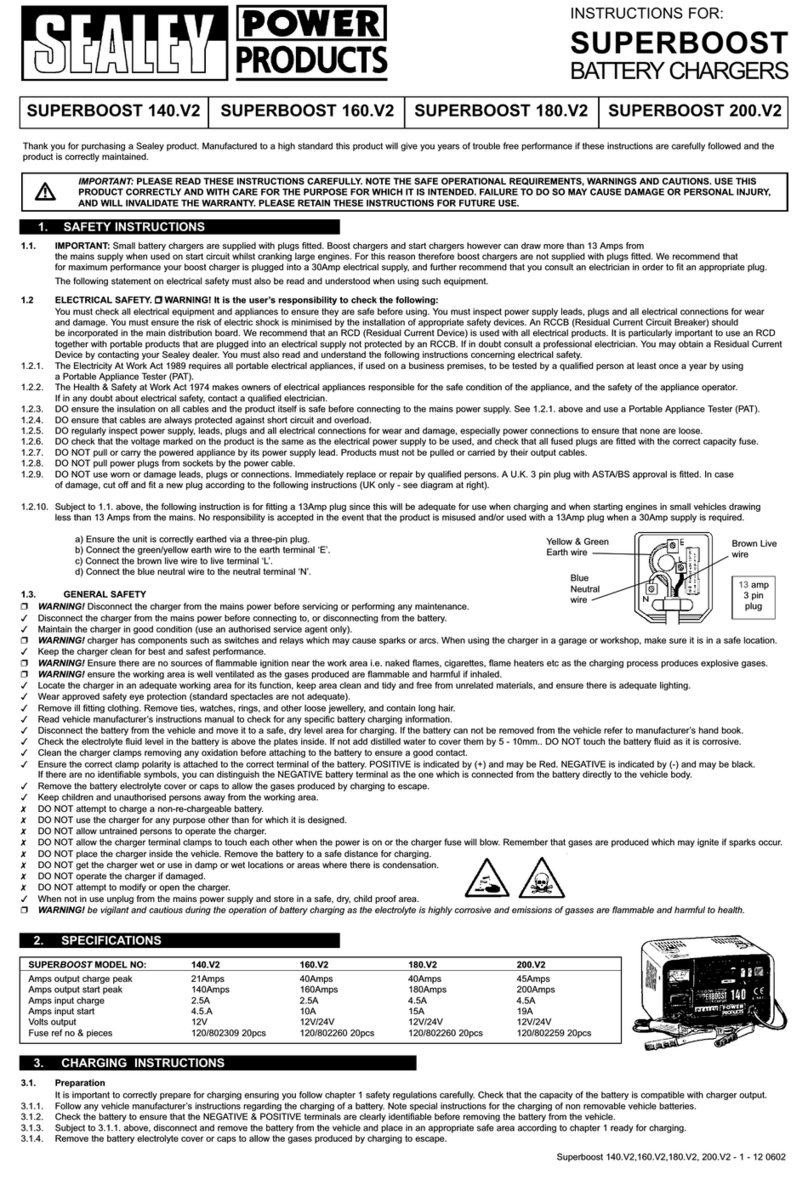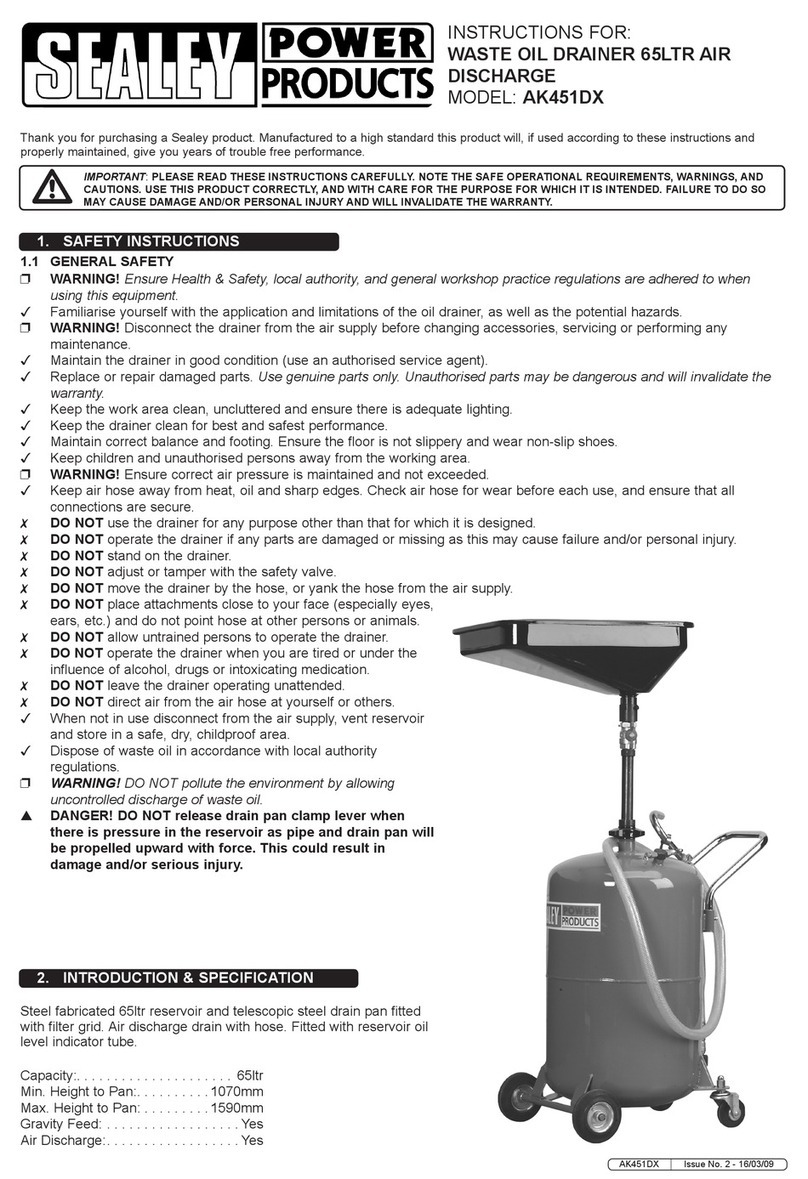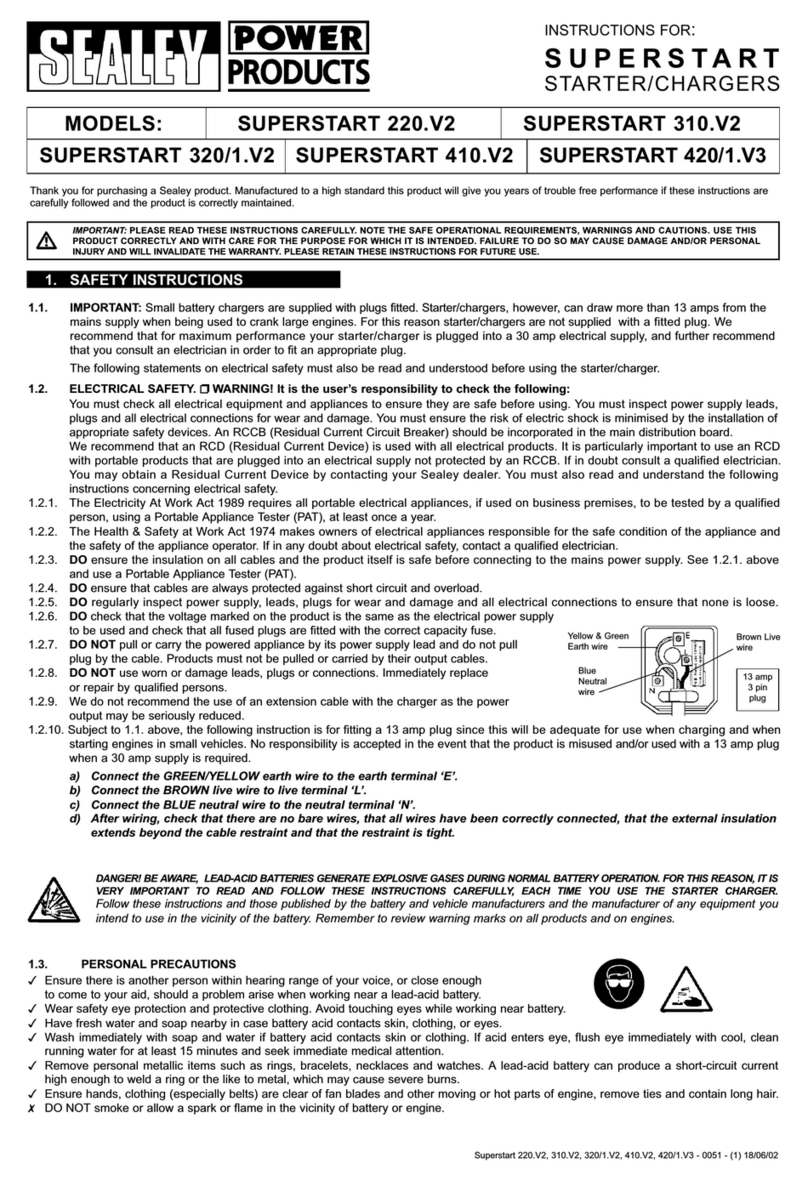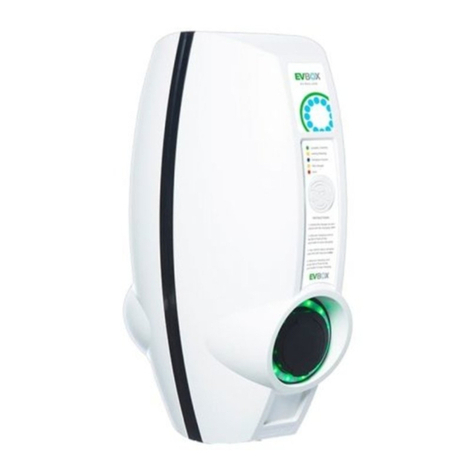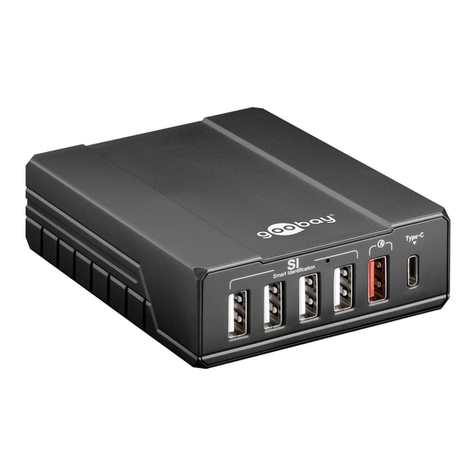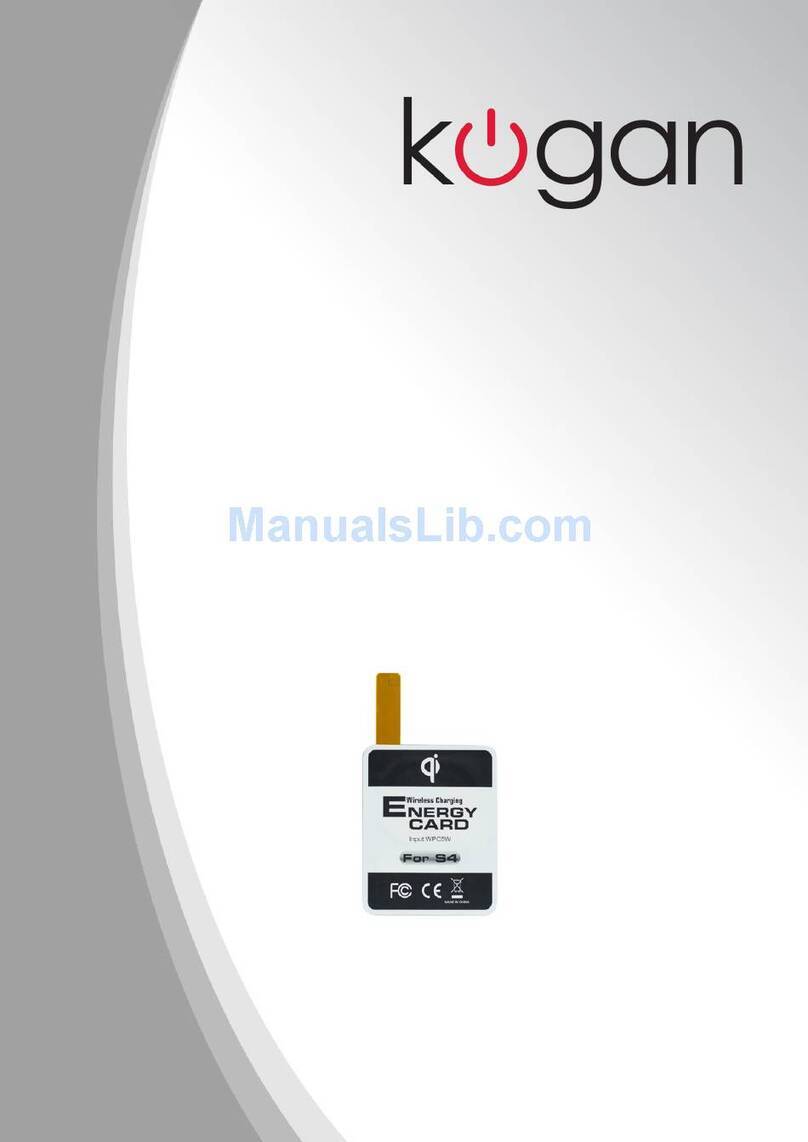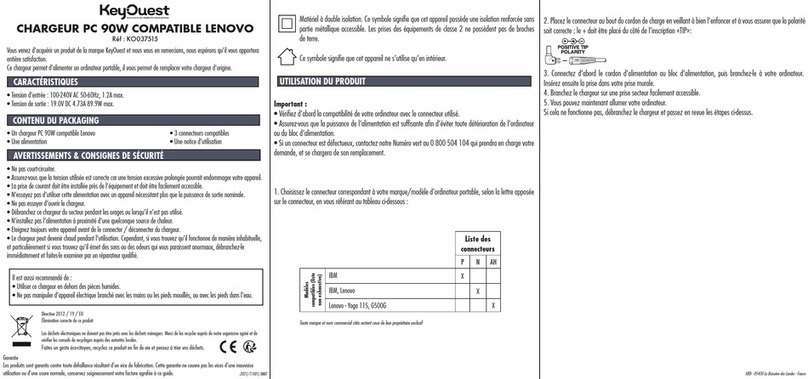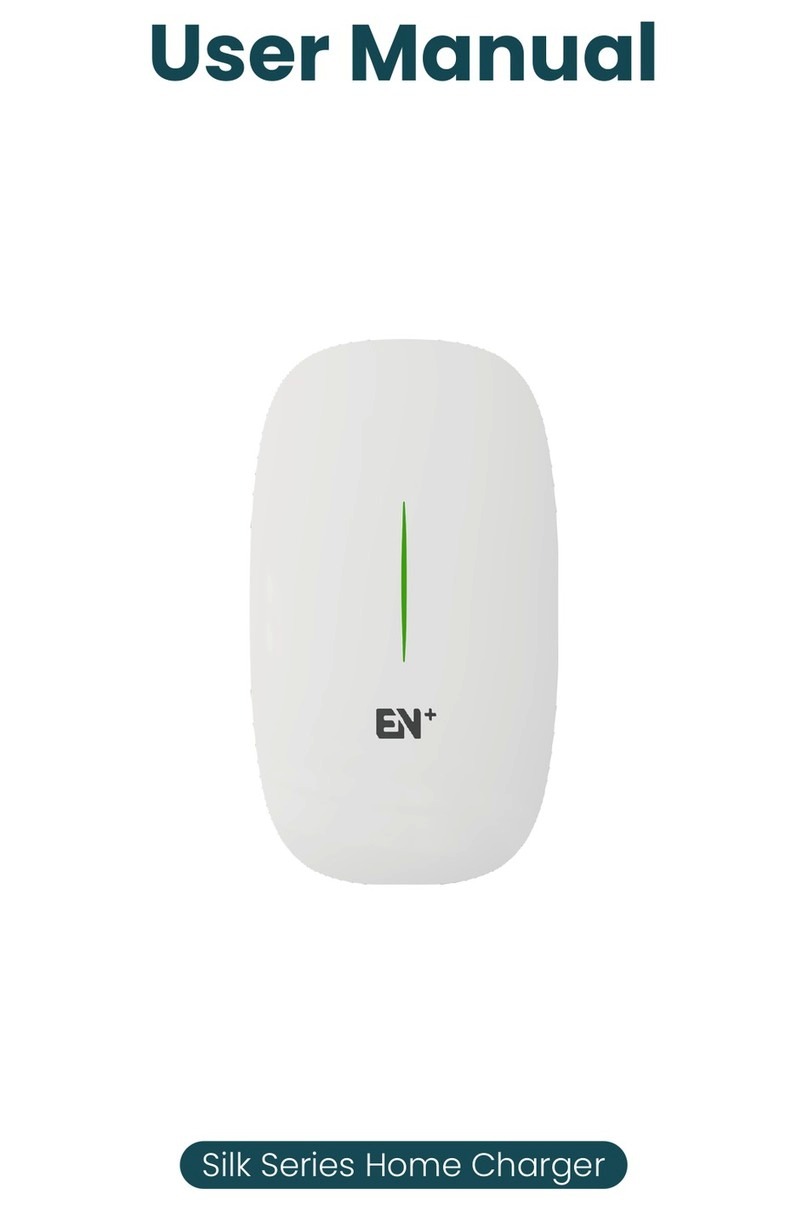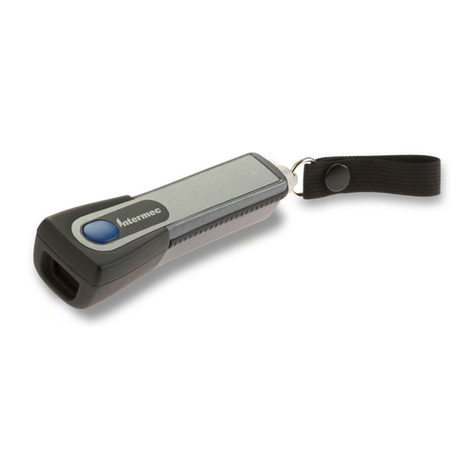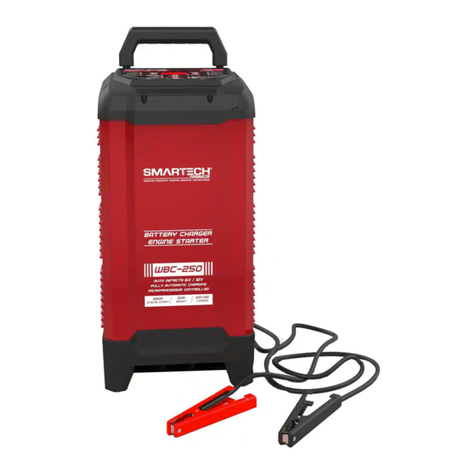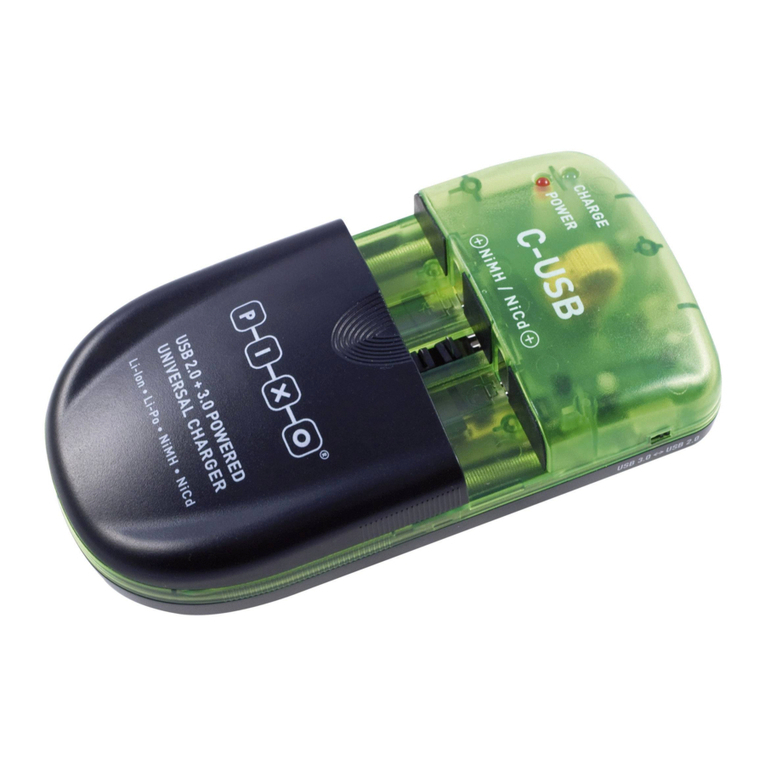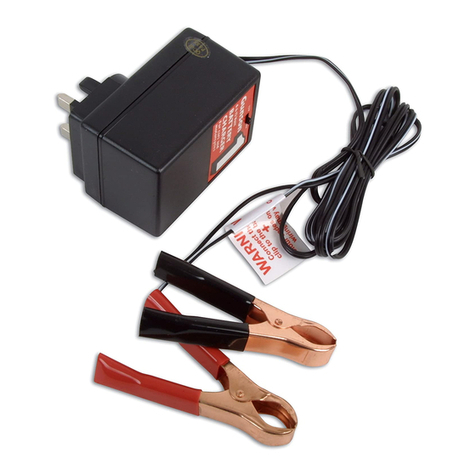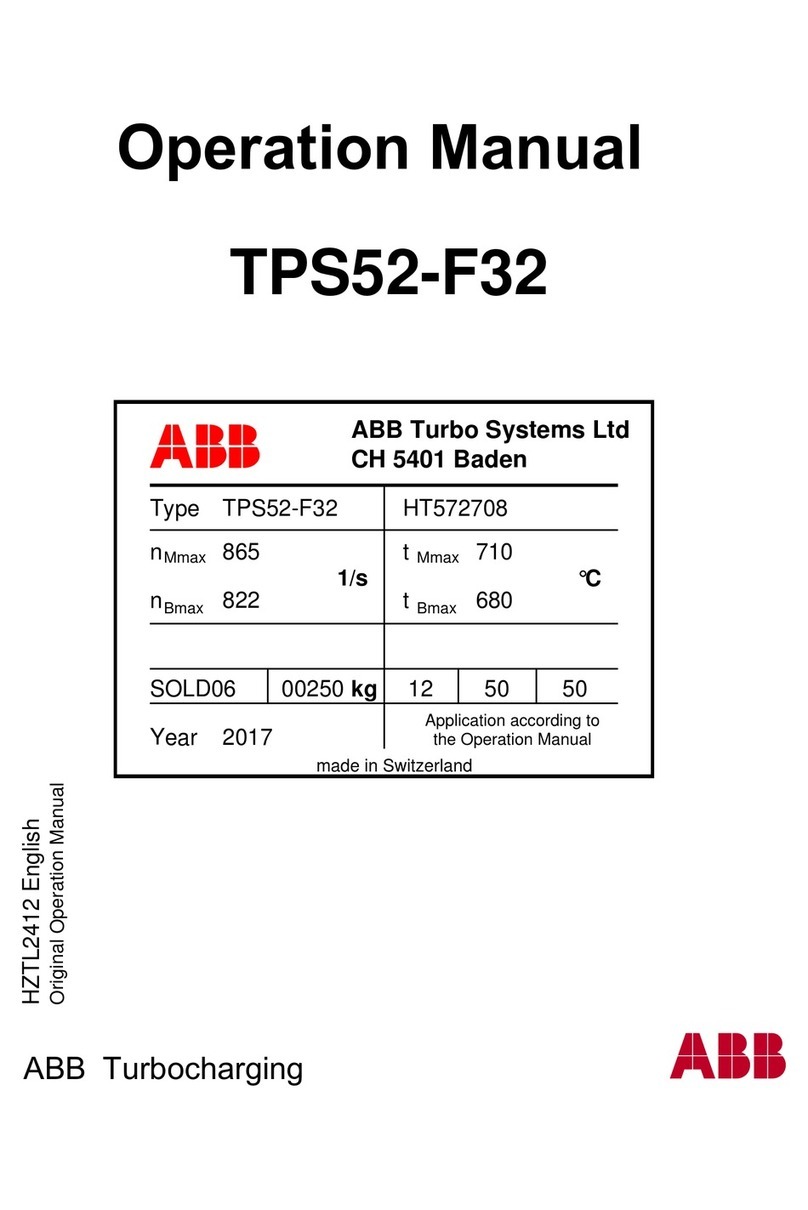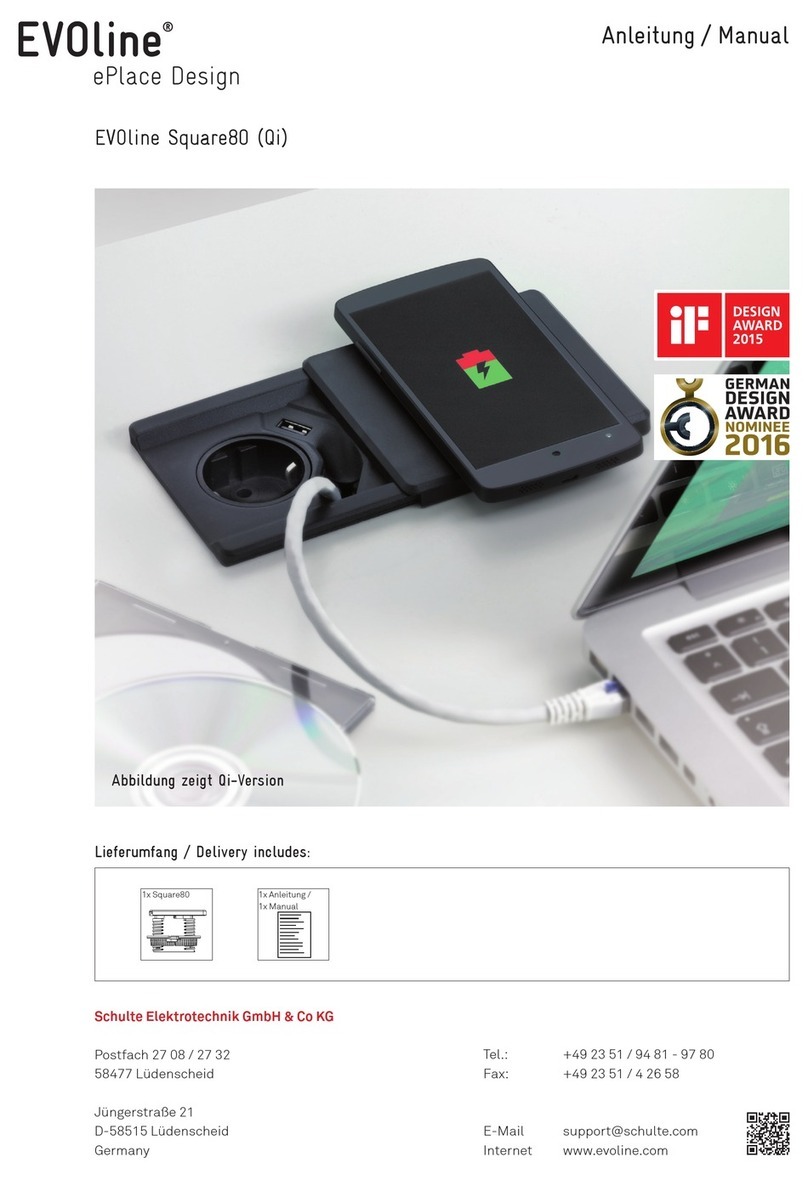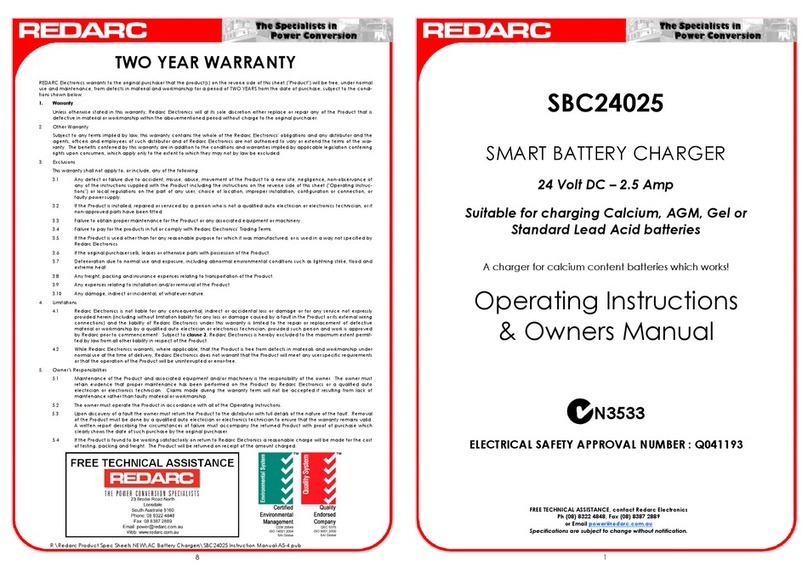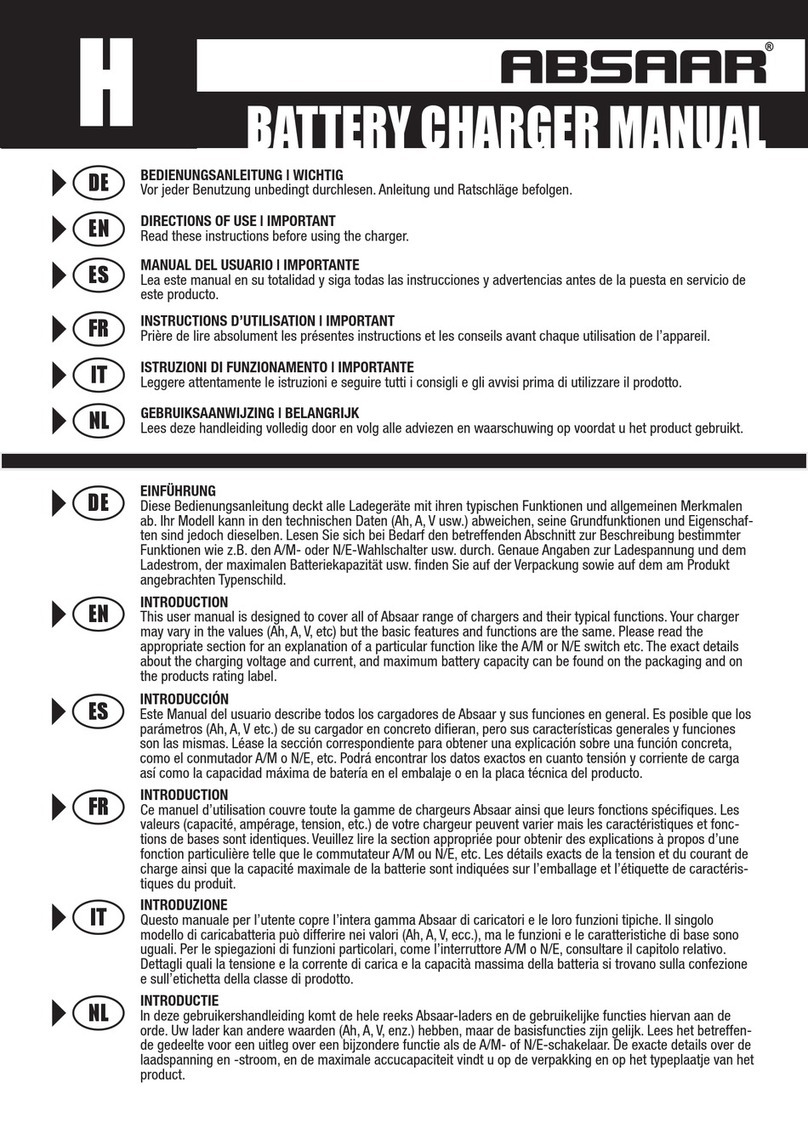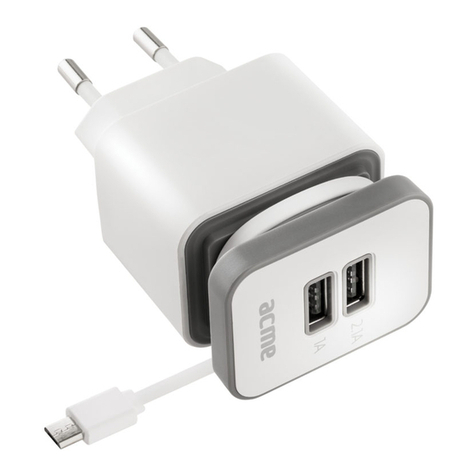3.3. ELECTRICAL SAFETY IN RELATION TO BATTERY CHARGERS
WARNING! It is the responsibility of the owner and the operator to read, understand and comply with the following:
You must check all electrical products, before use, to ensure that they are safe. You must inspect power cables, plugs, sockets and any
other connectors for wear or damage. You must ensure that the risk of electric shock is minimised by the installation of appropriate safety
devices. A Residual Current Circuit Breaker (RCCB) should be incorporated in the main distribution board. We also recommend that a
Residual Current Device (RCD) is used. It is particularly important to use an RCD with portable products that are plugged into a supply
which is not protected by an RCCB. If in any doubt consult a qualified electrician. You may obtain a Residual Current Device by contacting
your Sealey dealer.
You must also read and understand the following instructions concerning electrical safety.
3.3.1. The Electricity at Work Act 1989 requires all portable electrical appliances, if used on business premises, to be tested by a qualified
electrician, using a Portable Appliance Tester (PAT), at least once a year.
3.3.2. The Health & Safety at Work Act 1974 makes owners of electrical appliances responsible for the safe condition of those appliances
and the safety of the appliance operators. If in any doubt about electrical safety, contact a qualified electrician.
3.3.3. Ensure that the insulation on all cables and on the appliance is safe before connecting it to the power supply. See 1.1.1. and 1.1.2. and
use a Portable Appliance Tester.
3.3.4. Ensure that cables are always protected against short circuit and overload.
3.3.5. Regularly inspect power supply cables and plugs for wear or damage and check all
connections to ensure that none is loose.
3.3.6. Important: Ensure that the voltage marked on the appliance matches the power supply
to be used and that the plug is fitted with the correct fuse - see fuse rating at right.
3.3.7. DO NOT pull or carry the appliance by the power cable.
3.3.8. DO NOT pull the plug from the socket by the cable.
3.3.9. DO NOT use worn or damaged cables, plugs or connectors. Immediately have any faulty
item repaired or replaced by a qualified electrician. When an ASTA/BS approved UK
3 pin plug is damaged, cut the cable just above the plug and dispose of the plug safely.
Fit a new plug according to the following instructions (UK only).
a) Connect the GREEN/YELLOW earth wire to the earth terminal ‘E’.
b) Connect the BROWN live wire to the live terminal ‘L’.
c) Connect the BLUE neutral wire to the neutral terminal ‘N’.
d) After wiring, check that there are no bare wires, that all wires have been correctly connected, that the cable outer insulation
extends beyond the cable restraint and that the restraint is tight.
Double insulated products, which are always marked with this symbol , are fitted with live (brown) and neutral (blue) wires only.
To rewire, connect these two wires as indicated above - DO NOT connect either wire to the earth terminal.
FUSE RATING 3 AMP
Blue
Neutral
Wire
Yellow & Green
Earth Wire
Cable
Restraint
Brown
Live
Wire
4. CHARGING INSTRUCTIONS
WARNING! YOU MUST FOLLOW SAFETY INSTRUCTIONS
4.1. Charging Methods
PLEASE NOTE THE FOLLOWING: There are two ways to recharge the RS1224.V2 mobile power system.
4.1.1. The first method is to use the AC charger provided. This is the preferred method as it is automatic and does not require the user to monitor
the progress of the charge. Furthermore whenever the unit is not in use it can safely be left connected to the charger. Note: The output
switch must be set to the 12 volt position only when charging this way, otherwise the unit will only be partially charged.
4.1.2. The second method is to charge the unit from the vehicle's accessory / cigarette lighter socket, when the engine is running. This method
is not automatic and could result in the unit being overcharged if the user fails to monitor the charge and disconnect the power
source when full charge is reached. Overcharging could result in permanent damage to the unit. If using this method it must be
charged with the output switch set to the 12 volt position.
4.2. Reading the power level indicators.
4.2.1. The charge level of the unit can be checked at any time by pressing the test button and noting
the number of red power level lights that are illuminated.
Note: the green light does not illuminate when not charging.
Whilst charging, when all three power level lights and the green ‘fully charged’ light are
illuminated, the unit is fully charged and is ready to be used.
Note: It is recommended that the unit should be recharged if one, or more, of the lights
fails to illuminate when the test button is pressed.
4.3. Recharging.
WARNING! Use supplied adaptor, cables and connectors. Unauthorised parts may damage the unit and will invalidate the warranty.
Ensure you strictly apply the safety regulations as stated in Section 3.
Note: When the unit is fully discharged it may take up to 30 hours to achieve a full charge.
Note: Your Roadstart was pre-charged at the factory as it is best for the batteries to be kept at full charge. It is recommended that
you should put the Roadstart on charge immediately as this will ensure that the unit is fully charged when required for use, see para 4.3.1.
Original Language Version RS1224.V2 Issue: 5 - 23/12/11
Keep children and unauthorised persons away from the work area.
Keep work area clean and tidy and free from unrelated materials and ensure that there is adequate lighting.
If the unit receives a sharp knock or blow, it must be checked by a qualified service agent before being used.
When not in use re-charge every six (6) months.
DO NOT smoke or allow a spark or flame in the vicinity of the battery or engine.
DO NOT drop any metal tool onto the battery as it may spark or short circuit the battery, which could cause an explosion.
DO NOT use the unit to recharge dry cell batteries that are commonly used with home appliances. These batteries may burst and cause
injury to persons and damage to property.
DO NOT charge or boost a frozen battery.
DO NOT allow clamps to touch each other, or to contact the same piece of metal, as this will result in arcing.
DO NOT use attachments other than those recommended. To do so may risk damage to the unit, equipment and possible injury.
DO NOT pull or carry the unit by its cables or wires and do not pull the negative and positive clamps from the battery terminals.
DO NOT operate in vicinity of flammable liquids or gases.
DO NOT recharge the unit with plugs, cables or attachments that are damaged. Replace such items immediately.
DO NOT use this product to perform a task for which it is not designed.
DO NOT store the unit in damp or wet locations or where temperature may exceed 50°C.
DO NOT submerge the unit in water.
DO NOT use whilst under the influence of drugs, alcohol or intoxicating medication.
DO NOT leave the unit in a totally discharged state for an extended period of time as this may result in permanent damage.
DO NOT cross-connect the power leads from the Roadstart to the battery. Ensure that positive is to positive and negative is to negative.
Ensure the unit is fully charged before storage.
Note: The RS1224 may be used under any weather conditions. Rain, snow, heat, as well as cold temperatures.
